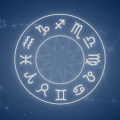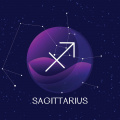Valentine's Day 2024: History, origin and fun facts to know about the special day when we celebrate love
Explore the enchanting history, origins, and delightful facts of Valentine's Day 2024, unraveling the tapestry of love's holiday. Dive into the romantic journey!

-
Discover the fascinating history of Valentine's Day, rooted in Roman martyrdom
-
Learn how Geoffrey Chaucer transformed Valentine's Day during the Middle Ages
-
Trace commercialization of Valentine's Day customs from Victorian wooing to heart-shaped chocolates
Valentine's Day, which is now celebrated with pinks and purples, chocolate-filled boxes, and expressions of affection, has a rich history that goes far beyond its current romantic implications. The term "Valentine" originates from the memorial of two martyrs slain on February 14 by Roman Emperor Claudius II in the third century A.C.E. The Catholic Church, probably in recognition of their sacrifice, established St. Valentine's Day.
Legends surround this occasion, with one Valentine performing covert nuptials for Roman troops, violating the emperor's desires. Another tradition tells of St. Valentine's affection for a young girl, ending in the memorable line, "From your Valentine." However, due to a scarcity of historical material about the martyrs, the Roman Catholic Church removed the feast day from its calendar in 1969.
Pagan roots and transformation
Valentine's Day is not without dispute about its origins. The ancient Roman festival of Lupercalia, held in mid-February to honor the gods of agriculture and fertility, included ceremonial practices such as priests running naked through the streets and gently slapping ladies with blood-soaked skins.
In the late fifth century A.C.E., Pope Gelasius I abolished Lupercalia. Some accounts believe he purposefully replaced it with the celebration of St. Valentine's Day on February 14, which coincided with a considerable transition from pagan to Christian observances.

Geoffrey Chaucer's romantic turn
Valentine's Day as a romantic occasion did not emerge until the Middle Ages, owing in part to Geoffrey Chaucer's artistic skill. In his 14th-century poems, "The Parliament of Fowls" and "The Complaint of Mars," Chaucer linked love to St. Valentine, likely spawning the romantic bond we know today.
The time coincided with February 14th, which is regarded as the first day of spring in Britain, and the start of birds' mating season. Chaucer's lyrics, which included anthropomorphized birds seeking mates, appealed to the public's preference for identifying dates with saints rather than numerals on the Catholic calendar.
Commercialization and Cupid's reign
Fast forward to the nineteenth century, which saw the beginning of commercialized Valentine's Day festivities. Victorian men wooed with flowers and Richard Cadbury created the classic heart-shaped box of chocolates, and Esther Howland, the "Mother of the American Valentine," promoted low-cost, store-bought valentines using innovative assembly line procedures. By the early 1910s, the company that would become Hallmark began selling official Valentine's Day cards, thus establishing the holiday's financial trajectory.

Apart from St. Valentine, Cupid appears as another emblem of love on this day. In Roman mythology, Cupid, Venus' son, wielded arrows that caused immediate love. While the precise moment Cupid joined the Valentine's Day story is unknown, his connection is anchored in the love-filled atmosphere he represents.
Fun facts to ignite the spirit
Delving into the fascinating aspects of Valentine's Day shows a tapestry weaved with many threads. The holiday was not originally associated with love, but it has changed throughout the ages. There is confusion about whose St. Valentine the holiday honors, with legends of prohibited marriages and prison-bound love letters. Lupercalia's ancient roots stand in stark contrast to the modern celebration of love.
As we celebrate Valentine's Day 2024, let us contemplate on its rich history, from ancient customs to Chaucerian poetry, and appreciate how it evolved into the worldwide recognized day of love we know today. Whether you exchange cards, and flowers, or simply enjoy the friendly ambiance, keep in mind that Valentine's Day is woven through history, stories, and the eternal power of love.
ALSO READ: Republic Day 2024: 10 interesting facts you need to know ahead of January 26





 JOIN OUR WHATSAPP CHANNEL
JOIN OUR WHATSAPP CHANNEL




































































































